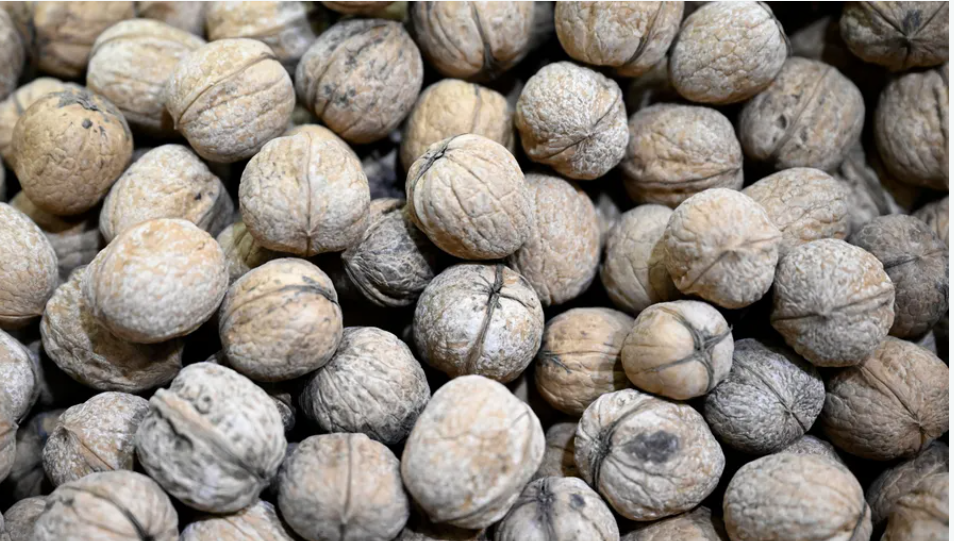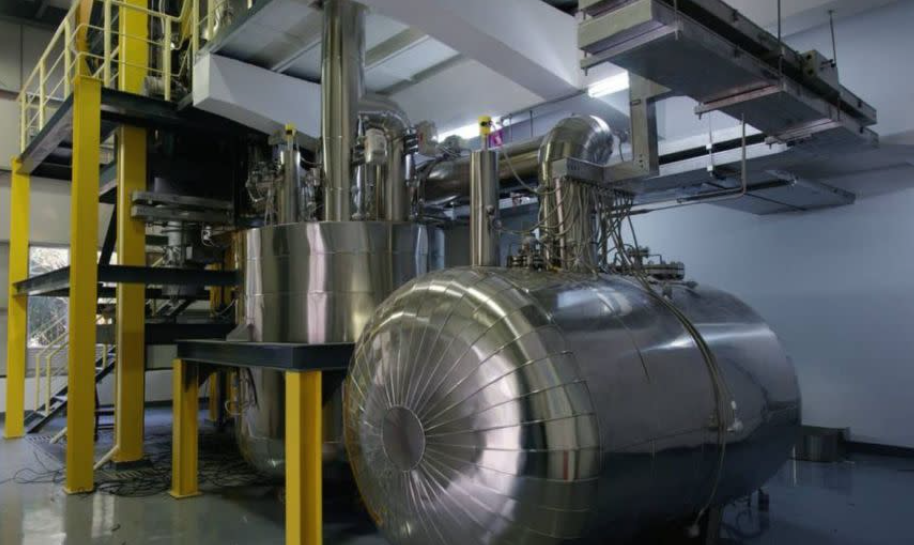An acid is defined as an ionic compound that contains H+ as the cation. This is slightly incorrect, but until additional concepts were developed, a better definition needed to wait. Now we can redefine an acid: an acid is any compound that increases the amount of hydrogen ion (H+) in an aqueous solution. The chemical opposite of an acid is a base. The equivalent definition of a base is that a base is a compound that increases the amount of hydroxide ion (OH−) in an aqueous solution. These original definitions were proposed by Arrhenius (the same person who proposed ion dissociation) in 1884, so they are referred to as the Arrhenius definition of an acid and a base, respectively.
You may recognize that, based on the description of a hydrogen atom, an H+ ion is a hydrogen atom that has lost its lone electron; that is, H+ is simply a proton. Do we really have bare protons moving about in aqueous solution? No. What is more likely is that the H+ ion has attached itself to one (or more) water molecule(s). To represent this chemically, we define the hydronium ion H3O+(aq), a water molecule with an extra hydrogen ion attached to it. as H3O+, which represents an additional proton attached to a water molecule. We use the hydronium ion as the more logical way a hydrogen ion appears in an aqueous solution, although in many chemical reactions H+ and H3O+ are treated equivalently.
The reaction of an acid and a base is called a neutralization reaction. Although acids and bases have their own unique chemistries, the acid and base cancel each other’s chemistry to produce a rather innocuous substance—water. In fact, the general reaction between an acid and a base is
acid + base → water + salt
where the term salt is generally used to define any ionic compound (soluble or insoluble) that is formed from a reaction between an acid and a base. (In chemistry, the word salt refers to more than just table salt.) For example, the balanced chemical equation for the reaction between HCl(aq) and KOH(aq) is
HCl(aq) + KOH(aq) → H2O(ℓ) + KCl(aq)
where the salt is KCl. By counting the number of atoms of each element, we find that only one water molecule is formed as a product. However, in the reaction between HCl(aq) and Mg(OH)2(aq), additional molecules of HCl and H2O are required to balance the chemical equation:
2 HCl(aq) + Mg(OH)2(aq) → 2 H2O(ℓ) + MgCl2(aq)
Here, the salt is MgCl2. (This is one of several reactions that take place when a type of antacid—a base—is used to treat stomach acid.)
Example 11
Write the neutralization reactions between each acid and base.
- HNO3(aq) and Ba(OH)2(aq)
- H3PO4(aq) and Ca(OH)2(aq)
Solution
First, we will write the chemical equation with the formulas of the reactants and the expected products; then we will balance the equation.
-
The expected products are water and barium nitrate, so the initial chemical reaction is
HNO3(aq) + Ba(OH)2(aq) → H2O(ℓ) + Ba(NO3)2(aq)
To balance the equation, we need to realize that there will be two H2O molecules, so two HNO3 molecules are required:
2HNO3(aq) + Ba(OH)2(aq) → 2H2O(ℓ) + Ba(NO3)2(aq)
This chemical equation is now balanced.
-
The expected products are water and calcium phosphate, so the initial chemical equation is
H3PO4(aq) + Ca(OH)2(aq) → H2O(ℓ) + Ca3(PO4)2(s)
According to the solubility rules, Ca3(PO4)2 is insoluble, so it has an (s) phase label. To balance this equation, we need two phosphate ions and three calcium ions; we end up with six water molecules to balance the equation:
2 H3PO4(aq) + 3 Ca(OH)2(aq) → 6 H2O(ℓ) + Ca3(PO4)2(s)
This chemical equation is now balanced.
Test Yourself
Write the neutralization reaction between H2SO4(aq) and Sr(OH)2(aq).
Answer
H2SO4(aq) + Sr(OH)2(aq) → 2 H2O(ℓ) + SrSO4(aq)
Neutralization reactions are one type of chemical reaction that proceeds even if one reactant is not in the aqueous phase. For example, the chemical reaction between HCl(aq) and Fe(OH)3(s) still proceeds according to the equation
3 HCl(aq) + Fe(OH)3(s) → 3 H2O(ℓ) + FeCl3(aq)
even though Fe(OH)3 is not soluble. When one realizes that Fe(OH)3(s) is a component of rust, this explains why some cleaning solutions for rust stains contain acids—the neutralization reaction produces products that are soluble and wash away. (Washing with acids like HCl is one way to remove rust and rust stains, but HCl must be used with caution!)
Complete and net ionic reactions for neutralization reactions will depend on whether the reactants and products are soluble, even if the acid and base react. For example, in the reaction of HCl(aq) and NaOH(aq),
HCl(aq) + NaOH(aq) → H2O(ℓ) + NaCl(aq)
the complete ionic reaction is
H+(aq) + Cl−(aq) + Na+(aq) + OH−(aq) → H2O(ℓ) + Na+(aq) + Cl−(aq)
The Na+(aq) and Cl−(aq) ions are spectator ions, so we can remove them to have
H+(aq) + OH−(aq) → H2O(ℓ)
as the net ionic equation. If we wanted to write this in terms of the hydronium ion, H3O+(aq), we would write it as
H3O+(aq) + OH−(aq) → 2H2O(ℓ)
With the exception of the introduction of an extra water molecule, these two net ionic equations are equivalent.
However, for the reaction between HCl(aq) and Cr(OH)2(s), because chromium(II) hydroxide is insoluble, we cannot separate it into ions for the complete ionic equation:
2 H+(aq) + 2 Cl−(aq) + Cr(OH)2(s) → 2 H2O(ℓ) + Cr2+(aq) + 2 Cl−(aq)
The chloride ions are the only spectator ions here, so the net ionic equation is
2 H+(aq) + Cr(OH)2(s) → 2 H2O(ℓ) + Cr2+(aq)
Example 12
Oxalic acid, H2C2O4(s), and Ca(OH)2(s) react very slowly. What is the net ionic equation between these two substances if the salt formed is insoluble? (The anion in oxalic acid is the oxalate ion, C2O42−.)
Solution
The products of the neutralization reaction will be water and calcium oxalate:
H2C2O4(s) + Ca(OH)2(s) → 2 H2O(ℓ) + CaC2O4(s)
Because nothing is dissolved, there are no substances to separate into ions, so the net ionic equation is the equation of the three solids and one liquid.
Test Yourself
What is the net ionic equation between HNO3(aq) and Ti(OH)4(s)?
Answer
4 H+(aq) + Ti(OH)4(s) → 4 H2O(ℓ) + Ti4+(aq)
Key Takeaways
- The Arrhenius definition of an acid is a substance that increases the amount of H+ in an aqueous solution.
- The Arrhenius definition of a base is a substance that increases the amount of OH− in an aqueous solution.
- Neutralization is the reaction of an acid and a base, which forms water and a salt.
- Net ionic equations for neutralization reactions may include solid acids, solid bases, solid salts, and water.
Exercises
-
What is the Arrhenius definition of an acid?
-
What is the Arrhenius definition of a base?
-
Predict the products of each acid-base combination listed. Assume that a neutralization reaction occurs.
a) HCl and KOH
b) H2SO4 and KOH
c) H3PO4 and Ni(OH)2
4. Predict the products of each acid-base combination listed. Assume that a neutralization reaction occurs.
a) HBr and Fe(OH)3
b) HNO2 and Al(OH)3
c) HClO3 and Mg(OH)2
5. Write a balanced chemical equation for each neutralization reaction in Exercise 3.
6. Write a balanced chemical equation for each neutralization reaction in Exercise 4.
7. Write a balanced chemical equation for the neutralization reaction between each given acid and base. Include the proper phase labels.
a) HI(aq) + KOH(aq) → ?
b) H2SO4(aq) + Ba(OH)2(aq) → ?
8. Write a balanced chemical equation for the neutralization reaction between each given acid and base. Include the proper phase labels.
a) HNO3(aq) + Fe(OH)3(s) → ?
b) H3PO4(aq) + CsOH(aq) → ?
9. Write the net ionic equation for each neutralization reaction in Exercise 7.
10. Write the net ionic equation for each neutralization reaction in Exercise 8.
11. Write the complete and net ionic equations for the neutralization reaction between HClO3(aq) and Zn(OH)2(s). Assume the salt is soluble.
12. Write the complete and net ionic equations for the neutralization reaction between H2C2O4(s) and Sr(OH)2(aq). Assume the salt is insoluble.
13. Explain why the net ionic equation for the neutralization reaction between HCl(aq) and KOH(aq) is the same as the net ionic equation for the neutralization reaction between HNO3(aq) and RbOH.
14. Explain why the net ionic equation for the neutralization reaction between HCl(aq) and KOH(aq) is different from the net ionic equation for the neutralization reaction between HCl(aq) and AgOH.
15. Write the complete and net ionic equations for the neutralization reaction between HCl(aq) and KOH(aq) using the hydronium ion in place of H+. What difference does it make when using the hydronium ion?
16. Write the complete and net ionic equations for the neutralization reaction between HClO3(aq) and Zn(OH)2(s) using the hydronium ion in place of H+. Assume the salt is soluble. What difference does it make when using the hydronium ion?
Answers
-
An Arrhenius acid increases the amount of H+ ions in an aqueous solution.
3.
a) KCl and H2O
b) K2SO4 and H2O
c) Ni3(PO4)2 and H2O
5.
a) HCl + KOH → KCl + H2O
b) H2SO4 + 2 KOH → K2SO4 + 2 H2O
c) 2 H3PO4 + 3 Ni(OH)2 → Ni3(PO4)2 + 6 H2O
a) HI(aq) + KOH(aq) → KCl(aq) + H2O(ℓ)
b) H2SO4(aq) + Ba(OH)2(aq) → BaSO4(s) + 2 H2O(ℓ)
9.
a) H+(aq) + OH−(aq) → H2O(ℓ)
b) 2 H+(aq) + SO42−(aq) + Ba2+(aq) + 2 OH−(aq) → BaSO4(s) + 2 H2O(ℓ)
11. Complete ionic equation:
2 H+(aq) + 2 ClO3−(aq) + Zn2+(aq) + 2 OH−(aq) → Zn2+(aq) + 2 ClO3−(aq) + 2 H2O(ℓ)
Net ionic equation:
2 H+(aq) + 2 OH−(aq) → 2 H2O(ℓ)
13. Because the salts are soluble in both cases, the net ionic reaction is just
H+(aq) + OH−(aq) → H2O(ℓ).
15. Complete ionic equation:
H3O+(aq) + Cl−(aq) + K+(aq) + OH−(aq) → 2 H2O(ℓ) + K+(aq) + Cl−(aq)
Net ionic equation:
H3O+(aq) + OH−(aq) → 2 H2O(ℓ)
The difference is simply the presence of an extra water molecule as a product.
















